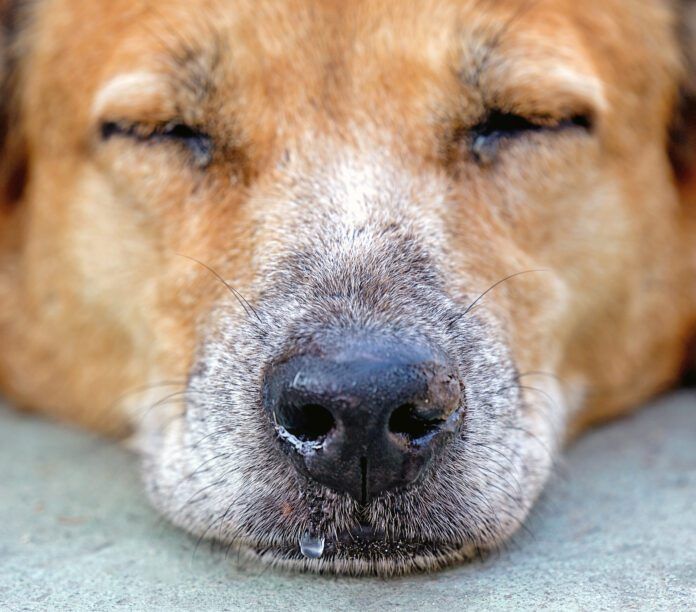A dog’s runny nose producing clear, watery discharge is usually nothing to worry about. It is likely a minor response to an allergen such as pollen or something else that irritated the inside of your dog’s nostrils.
A thick, pus-like, greenish, or bloody discharge is much more concerning, even in small amounts. This type of runny nose could indicate a foreign object stuck inside the nose, an infection, distemper, or even a polyp or tumor.
How to Help a Dog’s Runny Nose
If your dog just has a mild runny nose and no other symptoms, you can care for him at home. A clear, watery discharge will usually dry on its own and not cause your dog any discomfort. For thicker discharge, wipe your dog’s muzzle regularly with a damp cloth to remove crusts, prevent buildup, and keep his airway clear.
Your dog should see a veterinarian if he has:
- A runny nose and other symptoms of illness
- Trouble breathing because of the nasal discharge
- A persistent runny nose that keeps coming back
- A thick, mucoid, or bloody discharge
Your veterinarian will start by examining your dog and then may run other tests to figure out what is causing the runny nose. This may include swabbing the nose to do a bacterial or fungal culture, allergy testing, bloodwork, or x-rays.
My Dog Has a Runny Nose – What Can I Give Him?
If your dog has a runny nose, call your veterinarian’s office. Do not give any over-the-counter medications unless instructed to do so by your vet – many of the medications that are safe for humans can be dangerous for dogs.
A mild runny nose is usually nothing to worry about and can wait until regular business hours to be seen. Clean your dog’s muzzle as needed to keep his nostrils clear and prevent buildup of debris.
If your dog is having trouble breathing or is bleeding heavily from the nose, this is an emergency. For a nosebleed, you can try applying gentle pressure as you head to the veterinary hospital, but many dogs will not tolerate this. Instead, focus on keeping your dog as calm as possible.






